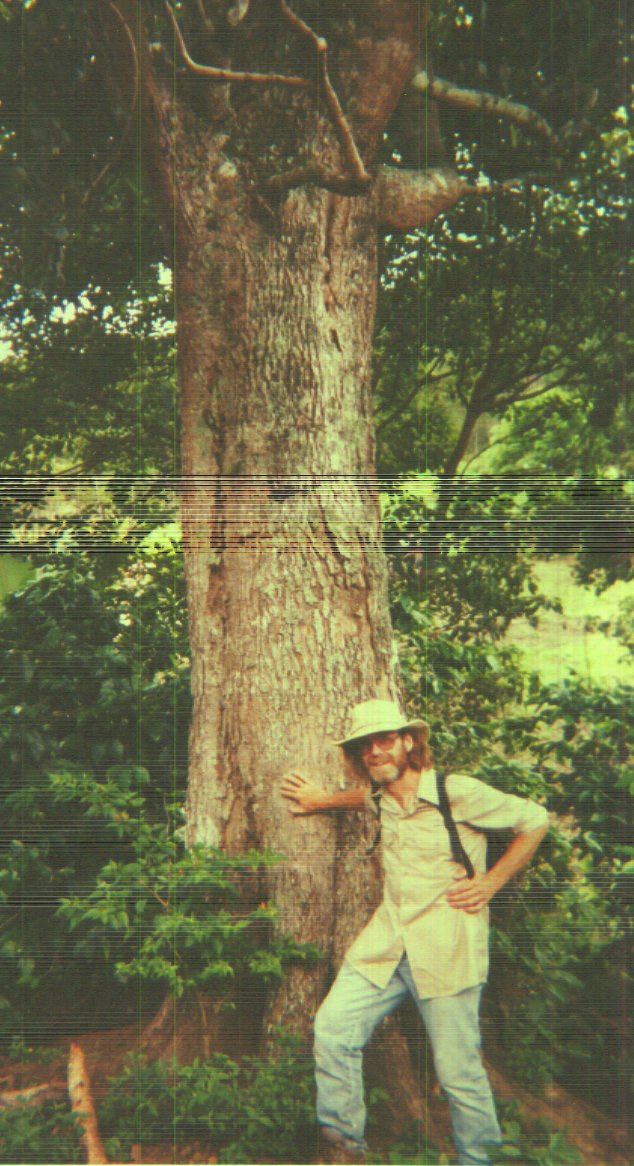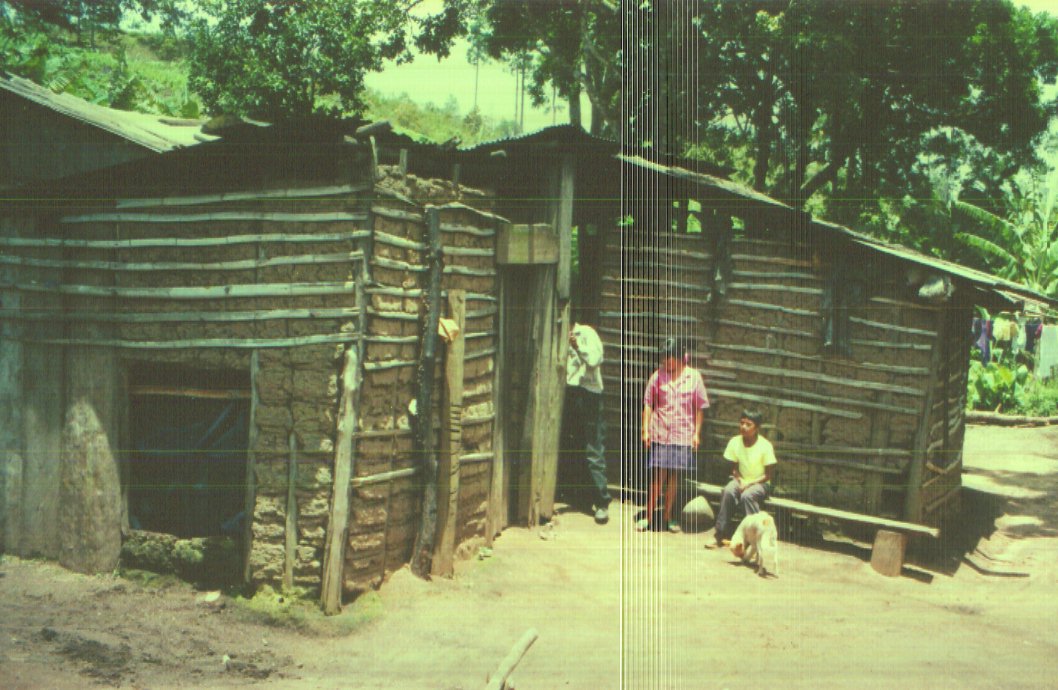 Twenty
Years Later (2001)
Twenty
Years Later (2001)
In 2001 I returned to Sangarro for the first time since 1981. My friend Jack Steffek and I flew from Albany, New York to Tegucigalpa, Honduras. We traveled by public bus from Tegucigalpa to Danli to El Paraiso and on to the Nicaraguan border. With only small packs we crossed the border easily and then, as in times past, hitched a ride to Ocotal. We walked the dusty mile from the highway into Ocotal and we were welcomed at the home of my old friends Abran and Christina Vilchez (Marcelita was studying at the University in Managua!).
In the morning Abran joined us on the bus trip to his farm beyond Santa Clara. There we saddled up horses, and with the assistance of one of Abran's workers as our guide, we headed up the mountain. One hundred times I had made the journey and this was the first time with a guide! The word in the valley was "be very careful."
Much had happened in twenty years. Indeed there had been a brutal war
between the Contras and the Sandinistas. Some familes were divided, with
a son on each side of the war. Times in the mountains became very dangerous.
Some say our Sangarro house was occupied by Contras at one time and Sandanistas
at another time and that it was bombed by both sides!  Another
story is that one year a fire swept through the farm and destroyed almost
everything. Indeed, almost all of the trees that we had planted were gone,
exept for one big avocado tree which Jack is leaning against in the picture
on the right. Extensive lumbering had also taken most of the pine trees
and Hurricane Mitch had cut deep gullies through much of the land.
Another
story is that one year a fire swept through the farm and destroyed almost
everything. Indeed, almost all of the trees that we had planted were gone,
exept for one big avocado tree which Jack is leaning against in the picture
on the right. Extensive lumbering had also taken most of the pine trees
and Hurricane Mitch had cut deep gullies through much of the land.
All that was left of our Sangarro house was the the stone chimney (pictured above) and the octagonal floor, which one of the new Sangarro families is standing on in the photograp below. There are four other families living on other parts of the forty acres. The men were Sandinista soldiers, mainly from the area of Totogalpa, who were told to occupy the land after the Sandinistas lost the election in 1990. At first Sangarro was a cooperative, but due to conflict between the families, they each decided to fence and work their own piece of land.
On this fine day twenty years since leaving Sangarro, our guide chose to stay with the horses up the hill, on the outside of the fence, and Jack and I headed down the path to meet the Sangarro families.
A women came cautiously out of the dab and wattle house and I introduced us as the Yankees from the old days. Little by little more people arrived, several carry machetes and hoes from their work in the fields. All of the sandy land, formerly pasture, was planted to corn and beans. We pulled out our bottle of rum and it was passed amongst the men. Soon tortillas and beans were brought out by the women and we sat around on the old hexagonal floor eating and drinking. They asked what we used the big stone tower for. A neighbor from the old days passed by and joined our party. He started telling stories about the Yankees -- how the lady Elizabeth would use a chain saw and was always working with a baby on her back. The men said how hard times were and explained how all of them were doing day-work on the bigger farms. I got the idea that they wanted us to come back and be their patron. We wished them good luck and said farewell. We walked back to the horses and headed on up the mountain a bit just to see if we might get lucky and find Raphael.
Well, there he was, sitting on the porch of his little home. Turns out he escaped the turmoil of the contra war by going to Honduras where he was arrested. There, before a judge, he produced a letter I had written him from the US and said that it had saved him from prison. He showed me the letter, which he kept with him at all times. He had sold his forty acres and was now the caretaker of the land. A Sandinista soldier had "stolen" his wife and took her and the kids to Honduras. He was a bit angry at me for being gone for so long and wondered if I might be coming back. We shared a drink and a hug and a tear.
And of those two little Gringo boys born in these mountains -- they learned to wear shoes, earned graduate and professional degrees from US universities, are embarked on careers, married, speak fluent Spanish and have friends in their country of birth -- Nicaragua.
The little boy Ronald, mentioned in The Sixth and Seventh Years, came to the U.S. in 1986. He worked at fast food restaurants and two years later was able to bring his father to the U.S. Then two years later, his mother and little brother and sister were able to join them. Ronald now speaks fluent English, French and Spanish and works for a bank in California.

